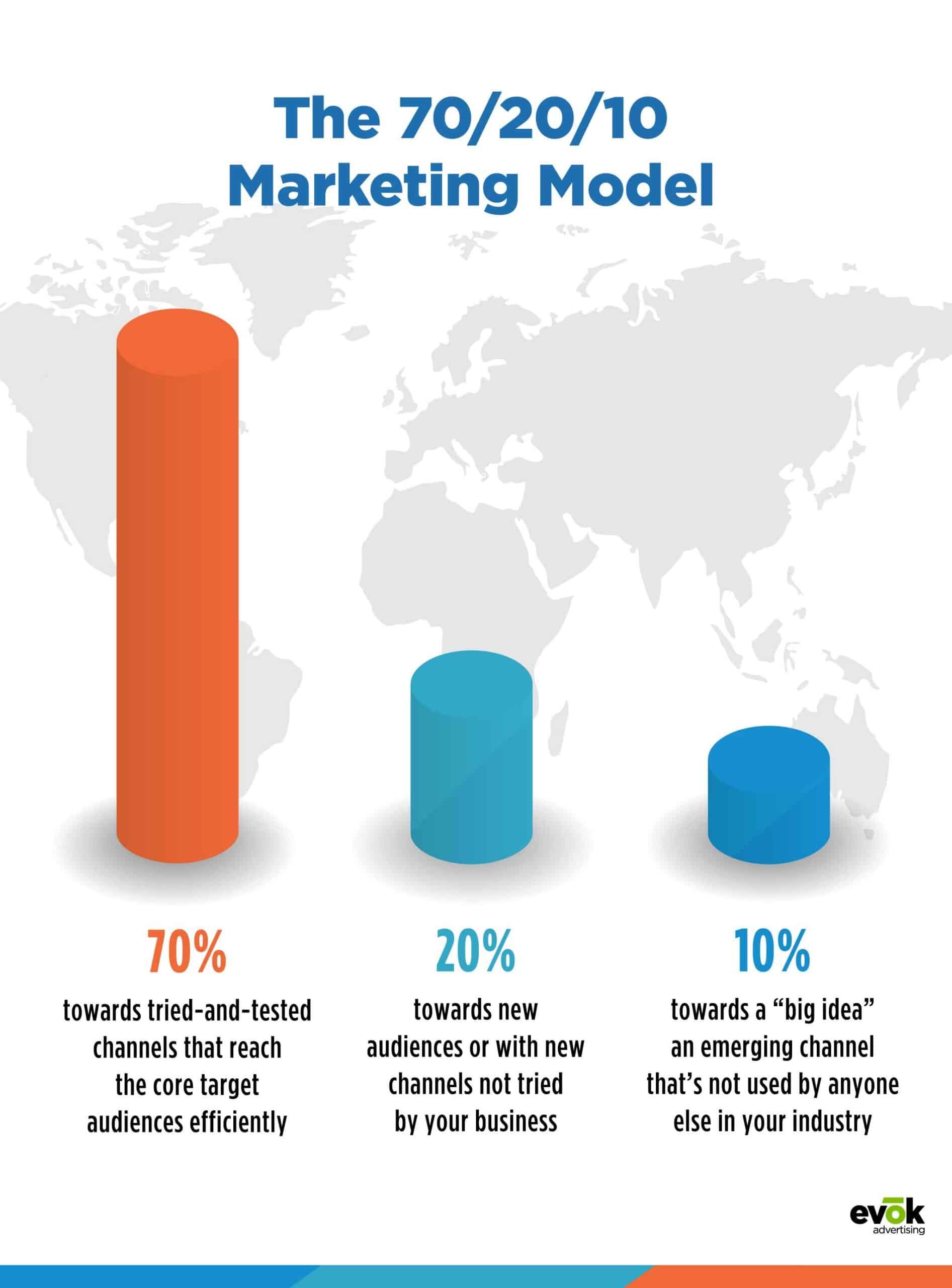
How Marketing Agencies Drive Growth by Setting Smart Marketing Budgets
Want a peek inside agency walls and what drives KPI-impacting results for our clients? This month we asked our VP, Strategic Planning, to share tips on what makes a good marketing budget for business growth. Here’s his takeaway.
How Do I Allocate My Marketing Budgets?
In a marketing world proliferating with digital channels and tactics, it can become overwhelming for marketing executives and media planners to navigate all the options available while remaining confident about creating plans that deliver on business objectives effectively and efficiently.
At the same time, improvements in tracking and reporting, combined with real-time dashboards, provide us with more insightful data than we’ve ever had. The adage, “I know half my advertising works – I just don’t know which half,” is no longer an excuse for ambiguous results.
The challenge is how to balance strategies and tactics that have worked in the past against newer or emerging options that have a little-to-no track record of success in your business. Then, you must learn to fit all of this together with finite budgets and demanding goals.
It’s Tough to Take Marketing Risks
A recent report from the Harvard Business Review suggested that around 30% of marketers admitted they had not experimented with their digital marketing strategies. In other words, over two-thirds were unwilling to take risks with their budgets. Another study from Facebook’s Marketing Science Research team found that only 13% of 7,000 large-spending advertisers were using the more complex methods of attribution testing available.
The point is, there seems to be a reservation in human nature to be too adventurous when it comes to venturing out of their business comfort zones. So, it’s useful for planners to have a process that not only liberates them to think beyond the status quo but also pushes change without worrying about the subsequent results.
A 70/20/10 Model
For marketing, it’s the process of planning your efforts into three different size buckets. So in broad terms, for example:

The 10 percent bucket should not be expected to have good, or even measurable, results. The point of utilizing tactics out of your comfort zone is to learn, gain insights or maybe even go viral on TikTok!
The 70/20/10 Model for Marketing Strategies
Many companies have been using 70/20/10 in one form or another since the 1980s. Apple and Google use their own interpretations as part of their innovation processes. Coca-Cola is said to engage this model as an investment strategy, and several of the top international advertising agencies follow it.
Some common applications for this model include, but are not limited to:
- Brand marketing
- Traditional advertising
- Digital media
- Content marketing
- Social media
The bottom line is, this method is capable of delivering reliable results and long-term growth optimization. It helps strategic planners think of the big picture and feel comfortable in how they allocate their resources. Plus, it allows them to be confident in garnering further insights for future strategy.
Think of It in Terms of Resource
Evok is a medium-sized US advertising agency. In other words, we serve a lot of local businesses but also specialize in categories that bring us national and international clients. Our clients have significantly varying budgets and remits, therefore we need a 70/20/10 process that can work for us and all of our clients.
So, it’s not just about budget, rather it’s about how we allocate resources to make the most of our time and efforts. For example, there’s no point in having a 10 percent “big idea” for social media if the creative team has 50 percent of their total hours available. That’s why this model has to be used strategically to make sure it’s the best approach for everyone involved.
Don’t Get Funnel Focus
When you’re under pressure to deliver results, there’s a tendency to obsess over ROI at every turn. Of course, ROI is the raison d’être (or the most important reason) of marketing, but if we are continually treating channels and tactics as a tradeoff commodity, then we lose creativity.

Steve Jobs didn’t insist on the iPhone’s touchscreen operating system by considering production costs; he had a vision that it would change the mobile phone industry forever, and he took that risk.
In marketing, if we just analyze the sales funnel by conversions, we’re going to end up at the bottom every time. But paid search alone probably isn’t solving your sales goals and certainly isn’t building your brand effectively. Therefore, you should ask yourself: How clear are your campaign strategies in terms of understanding the role of each channel? If you have a reporting dashboard that shows the cost per conversion in real-time, are you tempted or pressured to just move everything to PPC?
That’s the logical inference from the data, right? But we know through attribution modeling that there are many touchpoints further up the funnel that drive that lower hanging fruit to convert. Similarly, it might be comforting to back down and just stick with what you know in the 70% (and so make that 100%), but then you could be missing the chance to uncover a real growth opportunity or optimization insight.
It’s Not Always 70/20/10…
Few things in advertising are an exact science. Every industry, business, and campaign can be different. Additionally, it’s the fact that some initiatives will be multi-channel while others might just be a social media strategy. The point is, it’s a valuable way to start thinking when you start your strategic planning.
Unfortunately, there is not a lot of empirical research to demonstrate that this ratio system is the best approach to your business strategies. And even if it was, it’s almost impossible to allocate that accurately. Plus, who’s to say what’s appropriate for each bucket? That’s why it’s important to treat it as a rule of thumb. There still needs to be a degree of judgment and experience applied for each project. Then, perhaps, what’s 10 percent now becomes 20 percent next month, and then 70 percent next year.
Regardless, It’s All Flexible
Everyone in marketing knows how important it is to be nimble. Moving budgets between tactics is critical for optimizations. For that to be possible, you need to have great tracking and attribution, plus a good reporting platform that provides real-time data. But remember, you can’t judge that 10 percent by the same standards!